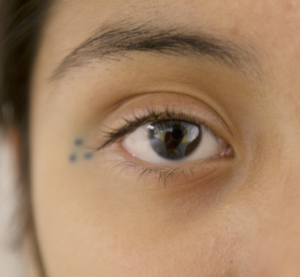The newly released full-color image highlights a stunning collection of ancient galaxies—and heralds a new age for astronomy.
After a million-mile journey into space, NASA’s newest flagship observatory, the James Webb Space Telescope, has captured its first suite of full-color images of the universe. And in a special preview event today, U.S. President Joe Biden has unveiled one of them, in which hundreds—if not thousands—of distant galaxies dapple an inky cosmic sea.
“It’s a new window into the history of our universe,” Biden said during the event. “And today we’re going to get a glimpse of the first light to shine through that window.”
The picture is JWST’s first shot at what astronomers call a deep-field image, when the telescope takes a long look at a tiny patch of space, collecting dim light and revealing extremely distant objects. As seen through the instrument’s sharp, infrared eye, that little patch is populated by swirling, glowing, gorgeous galaxies, some of which existed more than 13 billion years ago, when the universe was still a toddler.
“You do see the deepest view of the universe, ever, in that picture,” says NASA’s Thomas Zurbuchen, associate administrator of the science mission directorate.
At least four additional images will be released on July 12, offering new views of colliding galaxies, the final exhales of a dying star, a massive stellar nursery, and the spectrum of an alien world.
Launched on December 25, 2021, JWST is the most powerful telescope to ever take flight. When scientists first envisioned it decades ago, they imagined a telescope that would be able to peer back to the earliest beginnings of the universe, when the first stars and galaxies were emerging from the cosmic murk. To do that, the $10-billion observatory sees the sky in infrared light, or wavelengths that are slightly longer than what human eyes can perceive. Once the images are on the ground, they’re colored using a palette that corresponds to the different infrared wavelengths.
Over the years, multiple delays, mistakes during assembly, budget overruns, and an ongoing controversy about the man for whom the telescope is named plagued JWST’s journey to space. But once there, the telescope successfully performed a complex deployment routine with hundreds of tricky steps. The observatory’s 21-foot-diameter mirror unfolded, a multi-layer sunshield unfurled, and the instruments cooled to nearly absolute zero.
Now, with these first images in hand, it’s clear that JWST is working perhaps even better than expected—and that its next 20 years of science operations will be stuffed with surprises.
A LOOK BACK IN TIME
The deep-field image released today is, in some ways, analogous to traveling through time. It offers a glimpse of the distant past, when early galaxies were just growing up.
Zurbuchen describes it as an “action shot” because the light from those seemingly countless background galaxies is amplified and distorted by the immense gravity of a galactic cluster—called SMACS 0723—in the foreground. That massive cluster, which is four billion light-years away from Earth, acts like a magnifying lens, allowing the light from extremely old, much more distant galaxies to pop into view.
“It’s clear that the light finds a really complex way to us,” Zurbuchen says. “I think it’s almost overwhelmingly beautiful, knowing that the photons you’re imaging here have been in space, on the way to this camera, for over 13 billion years. I think it just takes your breath away.”
This isn’t the first time scientists have aimed a telescope at a patch of space and waited to see what turned up. In 1995 the Hubble Space Telescope stared at a seemingly empty patch of sky for a hundred hours. That effort produced one of the most revolutionary images in science: a galaxy-studded pocket of space that profoundly altered conceptions of how the universe is populated.
Hubble continued to produce deeper and deeper images, stretching the capability of the telescope to see into the early universe. Similarly, JWST will produce ever-deeper snapshots of the cosmos, coaxing secrets from the darkness and unveiling realities that humans have never seen before—and maybe never even imagined.
“Now we enter a new phase of scientific discovery. Building on the legacy of Hubble, the James Webb Space Telescope allows us to see deeper into space than ever before, and in stunning clarity,” Vice President Kamala Harris, chair of the National Space Council, said during the briefing. “It will enhance what we know about the origins of our universe, our solar system, and possibly life itself.”




